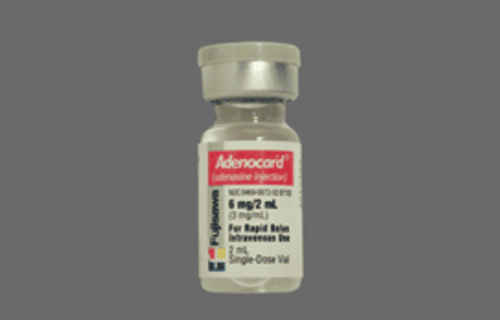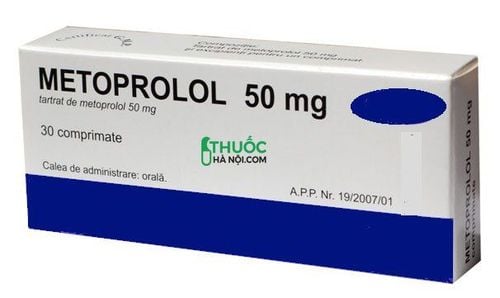This is an automatically translated article.
The article was written by Dr. Dao Thi Mai Lan - Medical Specialist - Gene Technology, VinmecStem Cell Research Institute and Gene Technology
Some people with drug-induced LQTS may also have another genetic disorder. They may not have symptoms unless they are taking drugs that prolong the QT interval or reduce potassium levels in the blood. When LQTS does not cause symptoms, it is called silent LQTS.
1. What is long QT syndrome?
Long QT syndrome (LQTS) is a disorder of the electrical activity of the heart. This disease can cause arrhythmias or sudden loss of heart rhythm control. People with long QT syndrome may have an arrhythmia of unknown cause.
Electrocardiogram is a common test that detects and records the electrical activity of the heart. Normally, with each heartbeat, electrical signals are generated and propagated from the top of the heart to the base of the heart, causing the heart to contract and pump blood. An electrocardiogram records electrical signals as they move through the heart and presents it as a graph. Each heartbeat has 5 distinct electrical waves: P, Q, R, S, T.
The electrical activity that occurs between the Q and T waves is called the QT interval. The QT interval indicates electrical activity in the ventricles, which is the time it takes for the heart muscle to contract and recover.
The term long QT is referred to when there is an abnormally long QT interval on the electrocardiogram. The normal QT interval is about one-third of each heartbeat cycle. However, in people with LQTS, the QT interval is longer than normal. A long QT interval can upset the timing of each heartbeat and trigger arrhythmias.
There are many ion channels on the surface of each cardiomyocyte. Active ion channels open and close to allow sodium, calcium, and potassium ions to move in and out of cells creating electrical activity in the heart. In people with LQTS, ion channels may not work as well or there may be too few ion channels. This can disrupt electrical activity in the ventricles and cause arrhythmias.
More than half of people with inherited types of LQTS will die within 10 years if left untreated. However, lifestyle changes and medications can help people with LQTS prevent complications and prolong life.

2. Causes of LQTS
Long QT syndrome can have a genetic or acquired cause.
2.1 Genetic causes People with hereditary LQTS have had it since birth and have it for life. Faulty genes are responsible for inherited LQTS. These genes produce proteins that form the structure and function of ion channels on cardiac cell membranes. Faulty genes can cause the body to make too few ion channels, ion channels not working properly, or both.
There are seven known genetic LQTS types (types 1 to 7) of which the most common are LQTS 1, 2 and 3.
In LQTS 1, stress or heavy exercise (especially swimming) can trigger arrhythmias. In LQTS 2, extreme emotions, such as surprise, can also trigger arrhythmias. In LQTS 3, bradycardia during sleep can cause arrhythmias.
2.2 Acquired causes Certain medications and conditions can cause acquired LQTS.
Drug-induced long QT syndrome: More than 50 drugs have been identified that can cause LQTS. Some common medications include:
Antihistamines and decongestants Diuretics Antibiotics Antiarrhythmics Antidepressants and antipsychotics Cholesterol lowering drugs and some diabetes medications
2.3 Other Causes of Acquired Long QT Syndrome Acute diarrhea or severe vomiting that loses a lot of potassium or sodium ions from the blood can cause LQTS. The disturbance persists until these ion levels return to normal. Eating disorders, anorexia and bulimia, and some thyroid disorders that can cause decreased levels of potassium ions in the blood can also cause LQTS.

3. Risk factors
Long QT syndrome is a rare disorder. Experts think that 1 in 7,000 people has LQTS. LQTS causes about 3,000 to 4,000 sudden deaths in children and young adults each year in the United States.
Inherited LQTS is usually detected in childhood or adolescence. Half of people with LQTS have their first irregular heartbeat by the time they're 12, and 90% by the year they're 40. This condition is rarely diagnosed after age 40.
In boys with LQTS, the QT interval usually returns to normal after puberty. If this happens, the risk of LQTS symptoms and complications is reduced.
LQTS is more common in women than men. Women with LQTS are more prone to fainting or sudden death due to menstrual irregularities and shortly after childbirth.
Children who are born deaf are also at higher risk of LQTS. This is because the same genetic problem that affects hearing also affects the function of ion channels in the heart.
Major risk factors include:
A family history of LQTS In a family of sudden unexplained death People with unexplained fainting Using medications that prolong the interval QT Having excessive vomiting or diarrhea or other conditions that lower blood levels of potassium or sodium. Suffering from eating disorders, anorexia and bulimia, thyroid disorders
4. Signs and symptoms of LQTS
4.1 Key Signs and Symptoms People with long QT syndrome can develop sudden and dangerous arrhythmias if not controlled in time. Signs and symptoms of LQTS-related arrhythmias that often first occur in childhood include:
Unexplained fainting. This happens because the heart does not pump enough blood to the brain. Fainting can happen under physical or emotional stress. Drowning or near drowning of unknown cause. This could be due to fainting while swimming. Sudden cardiac arrest or sudden death of unknown cause. Sudden cardiac arrest is a condition in which the heart suddenly stops beating for no apparent reason. People with sudden cardiac arrest will die within minutes unless detected and treated promptly.

4.2 Other signs and symptoms Usually, people with LQTS 3 develop an irregular heartbeat during sleep. This can cause gasping during sleep.
4.3 Silent long QT syndrome Sometimes long QT syndrome doesn't cause any signs or symptoms. This is called silent LQTS. For this reason, doctors often recommend that family members of people with LQTS get medical examination even if they have no symptoms.
To protect cardiovascular health in general and detect early signs of cardiovascular disease, customers can register for an examination at Vinmec International General Hospital - The place providing examination, consultation and treatment services. Comprehensive, professional, civilized, polite, safe and sterile medical examination and treatment space. Customers when choosing to perform tests here can be completely assured of the accuracy of test results.
Please dial HOTLINE for more information or register for an appointment HERE. Download MyVinmec app to make appointments faster and to manage your bookings easily.
Article referenced source: NCBI













